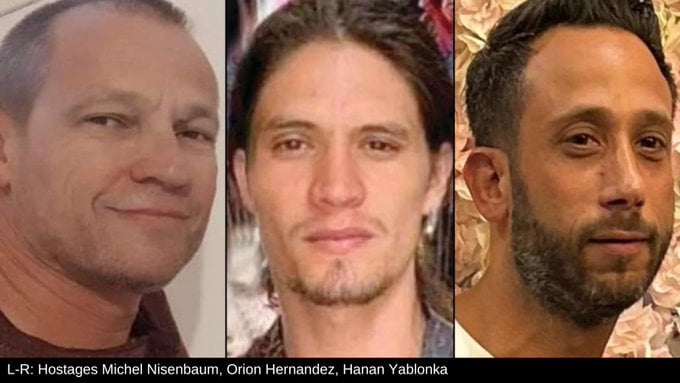Official Israeli and U.S. authorities declined to comment on the low number.
By Batya Jerenberg, World Israel News
American and Israeli intelligence believe that there may be as few as 50 hostages still left alive out of the 116 still being held in captivity in the Gaza Strip, the Wall Street Journal reported Thursday.
The daily cited “mediators in the hostage talks and a U.S. official familiar with the latest U.S. intelligence” as its sources.
Officially, on the Israeli side the IDF and Prime Minister’s Office declined to comment, and on the American end the Office of the Director of National Intelligence kept mum as well when asked for a response.
So far, Jerusalem has declared that 41 of the hostages in the hands of Hamas and other terrorist organizations are dead.
In a propaganda video Hamas released early last month, hostage Hersh Goldberg-Polin claimed that 70 of his fellow abductees were dead, blaming their demise on Israel.
The government bases its data on information gleaned by a small team of specialists, including forensic experts and even archeologists, who have dedicated months of their lives to hearing reports from witnesses, examining video filmed both by Hamas and Israeli security cameras, and parsing classified evidence regarding the victims of Hamas’ October 7 invasion that set off the ongoing war.
The army has helped by recovering footage on terrorists’ laptops its troops have found in Gaza during the fighting.
In the report, Maj. Gen. (res.) Tamir Hayman, former chief of IDF Intelligence and currently the director of the Institute for National Security Studies, said that the army is also tracing DNA found in the vast networks of tunnels, knowing that at least some of the hostages have been held underground.
While the seven hostages Israeli elite forces have managed to rescue alive so far have been malnourished and suffered physical and psychological abuse, all were found in apartment buildings.
Those released in the only hostage deal made to date, in November, spoke of much worse, fetid and oppressive conditions in the tunnels they were forced to live in.
While all of Israel rejoiced after the last rescue operation almost two weeks ago that freed four hostages, many people’s thoughts turned to those who were left, in fear that their situations would now deteriorate as a result.
Voicing what is perhaps the greatest concern, Gershon Baskin, a negotiator in the 2011 Gilad Shalit deal that saw the IDF soldier exchanged for over a thousand Palestinian prisoners, including current Hamas head Yahya Sinwar, said that Hamas “may have moved hostages from above ground to underground.”
The hostages’ families are understandably the most anxious of all, with most of them demanding that the government pay Hamas’ price of ending the war prematurely in order to achieve their loved ones’ freedom.
“We hang on to the hope that he might be alive,” said Izhar Lifshitz, whose 84-year-old father Oded was captured from Kibbutz Nir Oz during the invasion. “But in our stomach we know that older people, wounded people, people taken more than eight months ago, people like that even in Israel would need to change their medication several times, a doctor’s treatment. And they are not getting that there.”





